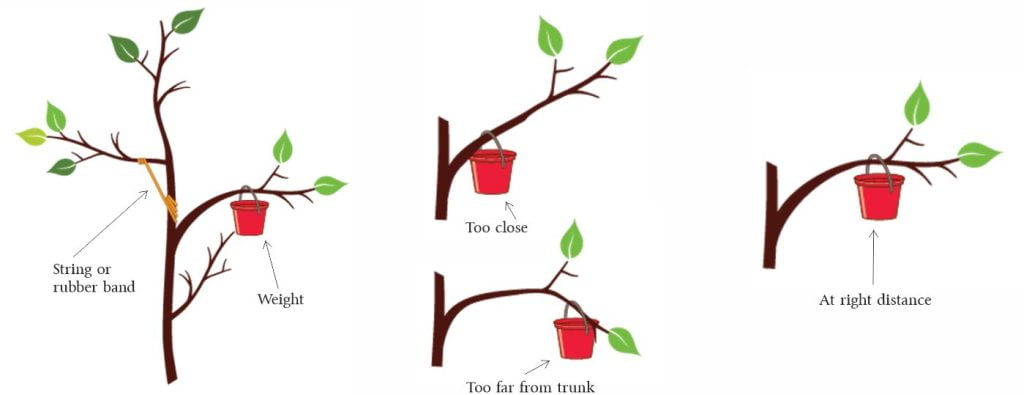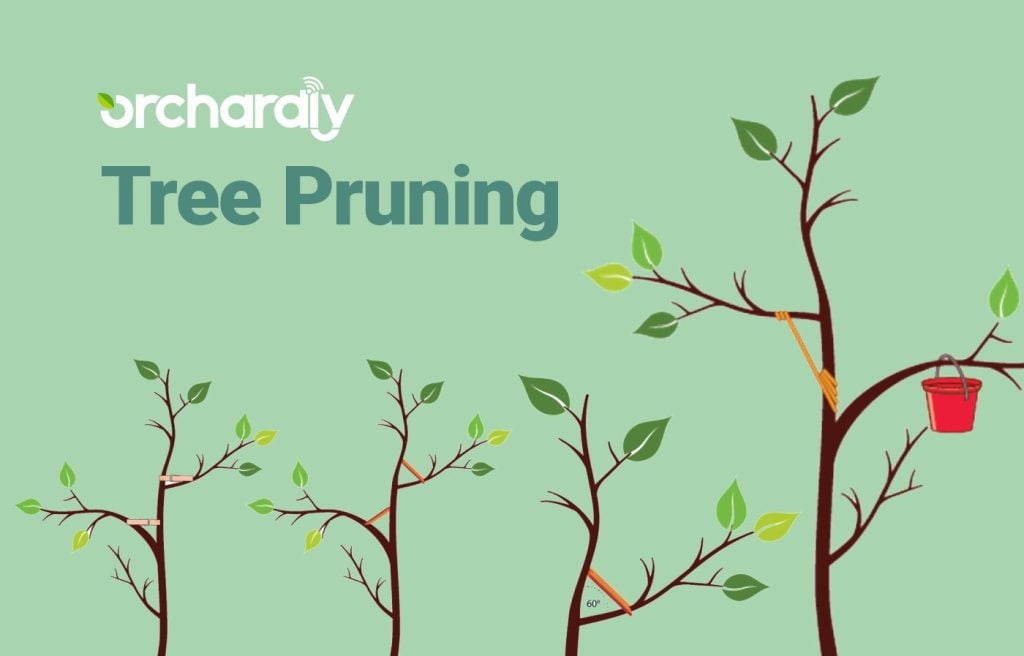Training refers to develop a desired shape of tree by controlling the habit of growth. It’s a strategic approach aimed at achieving specific objectives, including a well-balanced tree structure, efficient light and air distribution, optimal fruit accessibility, and ultimately, a high-quality fruit. Training in apple tree cultivation is a practice to guide growth and form of the tree, starts when the trees are young, often in the nursery, and continues throughout their growth to maintain the desired shape and facilitate fruiting. The early stages of training lay the foundation for a successful and fruitful orchard in the future. Improperly trained fruit trees generally have very upright branches angles, which result in serious limb breakage under a heavy fruit load.
General rule of training: A key training principle is to position the tree’s limbs correctly, rather than relying heavily on pruning. The positioning of limbs significantly influences whether a branch will primarily bear fruit. It’s generally recommended to maintain a crotch angle of 45 to 60 degrees for optimal fruit production.
Limb positioning techniques
Spreading
This technique uses objects such as toothpicks, clothespin, or short sticks to push branches to a horizontal position as shown in below pictures:

Tying and using Weights
By using twine, fiberglass tape or long rubber band.

Basic objectives of training
- To develop a strong framework that will support fruit production.
- To control vigour.
- To have an open canopy structure for optimal light penetration into the tree canopy.
- To improve flow of air within the tree canopy.
- To facilitate cultural operation like pruning, thinning, spraying and harvesting with ease.
Principles of training
- To promote a balanced distribution of vegetative and reproductive growth throughout the tree as, excessive vegetative growth leads to shading of fruiting wood and hinder fruit development.
- Choose well-placed and sturdy scaffold branches to form the main framework of the tree.
- The branches must be suitably spaced apart and the tree must be balanced on all the sides.
- Several branches must not be allowed to grow at one place or very near each other.
- The branches should be grown at a wider angle because narrow angle is always
weak.
Importance of training
- It allows better light penetration into the tree canopy. This in turn will enhance fruit quality and yield by promoting fruiting wood development, flower bud formation and coloration of fruits.
- Training promotes faster drying after rain or dew by improving ventilation within the tree canopy, and facilitates better spray coverage for disease and pest management, preventing disease infections and maintains overall trees health.
- Properly trained apple trees have a more accessible canopy, making it easier to harvest the fruit. Well-spaced branches and a manageable height reduce the need for ladders or complex harvesting techniques.
- Proper training simplifies the pruning and ensures that pruning is more effective and efficient, promoting healthy growth.
- Well-trained apple trees have strong and well-structured framework reduces the risk of branch breakage and facilitates the tree’s ability to support heavy fruit loads makes a longer orchard productive life.
In conclusion, training is a crucial practice in apple tree cultivation that shapes tree growth and ensures optimal fruit production. Through proper training, trees can efficiently bear significant fruit loads, leading to optimized fruit production, maintaining the overall health and longevity of their apple trees and sustainability of the orchard.


